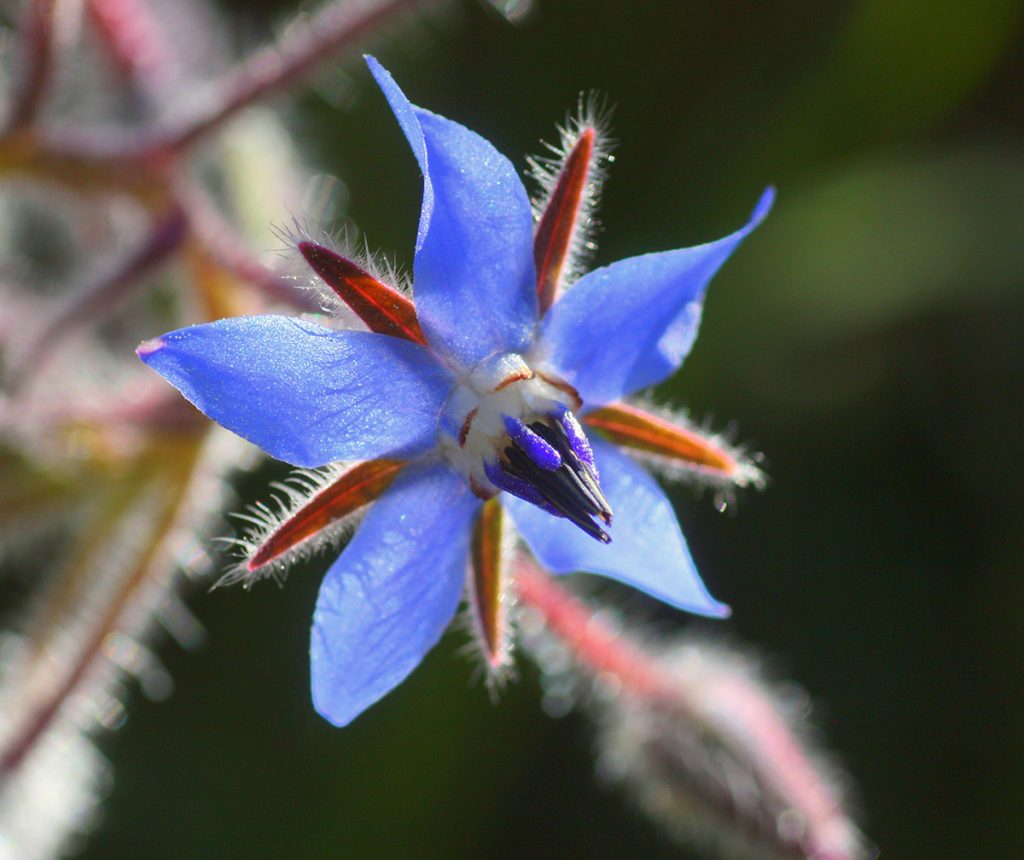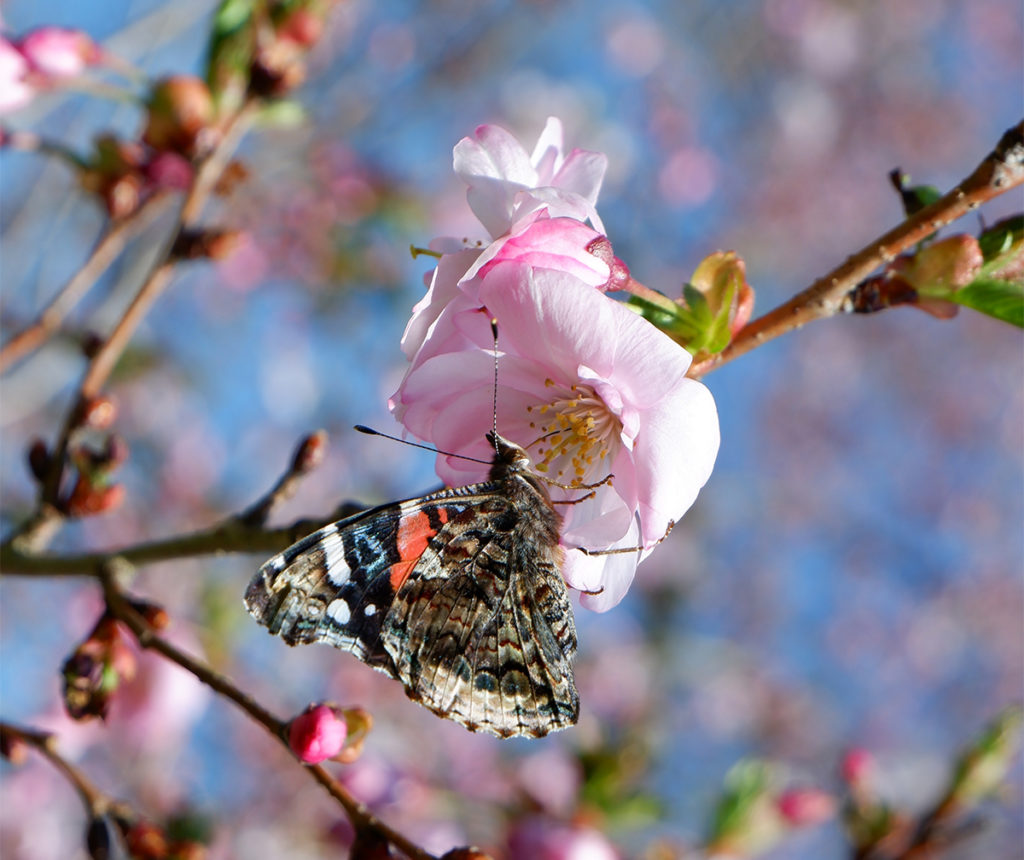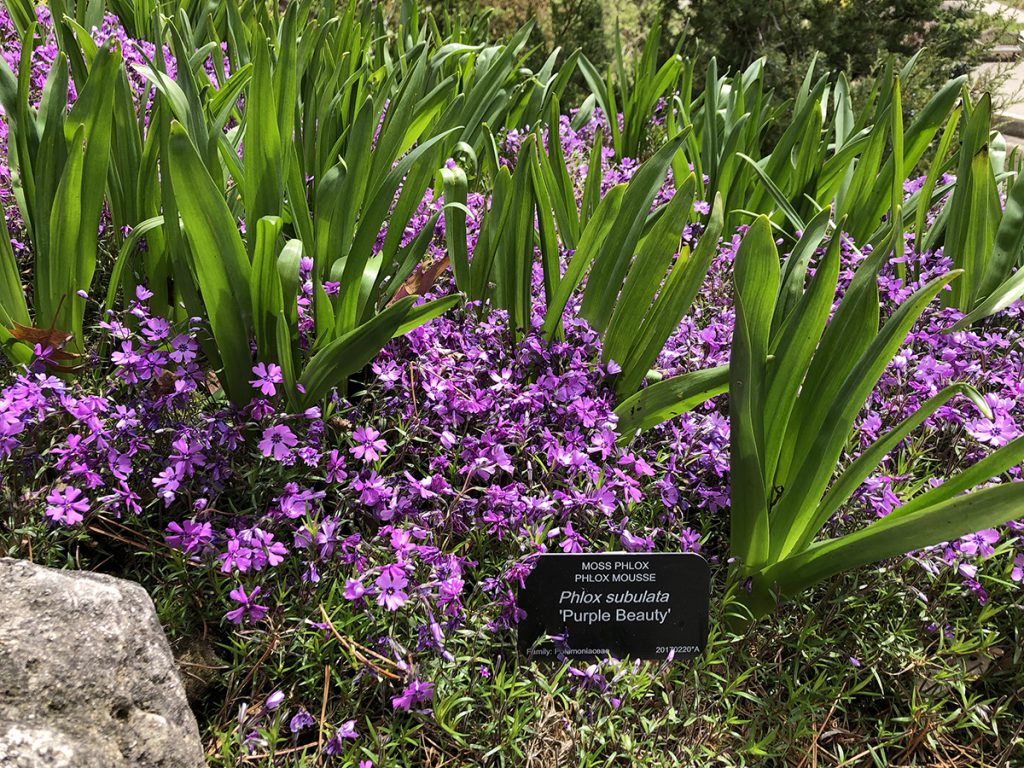| Membership | Price (+HST) |
|---|---|
| Single | $85/year |
| Single Plus | $120/year |
| Family | $130/year |
| Family Plus | $175/year |
| Contributing | $300/year |
| Supporting | $600/year |
| Sustaining | $1,000/year |
| Benefactor's Circle | $2,500/year |
| Director's Circle | $5,000/year |
| President's Circle | $10,000/year |
8 Ways to Attract Beneficial Insects to your Garden
By Jessica Veter, Volunteer, Royal Botanical Gardens.
I’m a live-and-let-live kind of gardener, though that was sorely tested when an army of caterpillars were stripping my honey locust. Thankfully, just as my thoughts turned to chemical solutions, a flock of birds descended on my tree, gorged themselves, argued about where to go next, and disappeared. I swear I heard the tree breathe a sigh of relief.
Birds aren’t the only friends who’ll help control insect infestations in the garden. Beetles, dragonflies, ladybugs, lacewings, tachinid flies, parasitic wasps and more are brilliant predators in their own right. They pollinate the veggie patch and are great recyclers.
Pesticides can’t distinguish between friends and foes. They’re equal-opportunity killers. But birds and beneficial insects aren’t on speed dial. How can I make sure they hang around? What’s the bird-and-bee-friendly equivalent of 1-800-GOT-BUGS?
8 Ways to Welcome Beneficial Insects to Your Garden, and Deter Pests!

1: Plant Pollinator-Friendly
Plant a variety of flowering plants rich in nectar, including plants like yarrow, coneflowers, coreopsis, daisies, asters, goldenrod, cosmos, tickseed. Native plants are important, but the extended bloom times of exotics shouldn’t be overlooked.
(Pictured: Pale Purple Coneflower)

2: Flowering Herbs
Allow some herbs and vegetables to flower. Consider borage, coriander, mint, fennel, dill, lavender, thyme, parsley, brassicas, kales.
(Pictured: Borage)

3: Blooms All Season Long
Pay attention to bloom times! Make sure there are nectar sources in flower from early spring (dandelions!), mid-season (milkweed) to late fall (sedum). Annuals can fill in gaps. Choose single flowers rather than doubles — some double flowers are of little or no use for insects (dahlias, for example).
(Pictured: Milkweed)

4: Companion Plants
Consider companion planting! Intersperse plants which attract beneficial insects with plants requiring protection.
(Pictured: Bald Faced Hornet on Goldenrod)

5: Think Big
Trees and shrubs flower too! Willows, Acers, Malus, Cornus, Ribes, Vibernum spp are all excellent choices. Think of your garden in terms of height as well as width. The possibilities are exciting.
(Pictured: Flowering Cherry)

6: Just Add Water
Provide a water source for insects. Use a shallow dish or bird bath with the water changed regularly prevents mosquito larvae. Put a few stones in the water as a landing pad for insects.

7: Ground-Cover
Minimise soil disturbance. Mulch conserves soil moisture and provides shelter. Plant non-invasive ground covers: creeping phlox, thyme, sedum, spotted deadnettle.
(Pictured: Phlox)

8: Leave Some “Weeds”
Weeds are just plants growing in the wrong spot, right? Plants such as dandelion, wood sorrel, clover and deadnettle are excellent nectar sources. I’m going to let them flower.
(Pictured: Dandelion)
Looking for Inspiration?
For an excellent example of planting for beneficial insects, come have a look at RBG’s Rose Garden in Hendrie Park. The companion plants among the roses have been specifically chosen to encourage insect predators.
More from the RBG Blog
Check out RBG’s blog for announcements, articles, and more from Canada’s largest botanical garden.
Want to be sure you hear first? Sign up for our weekly e-newsletter to hear about upcoming events, weekend activities, articles, and more!












